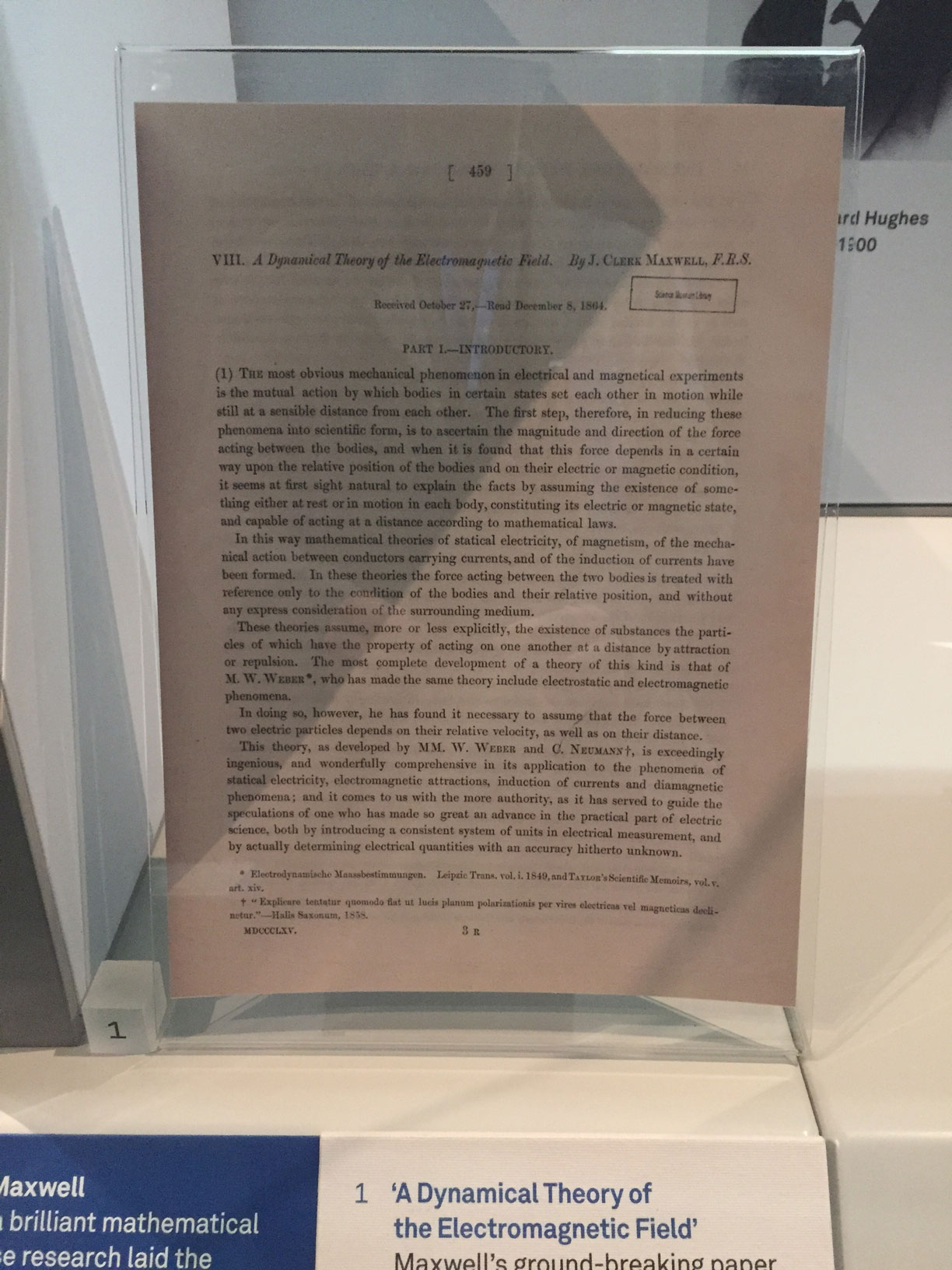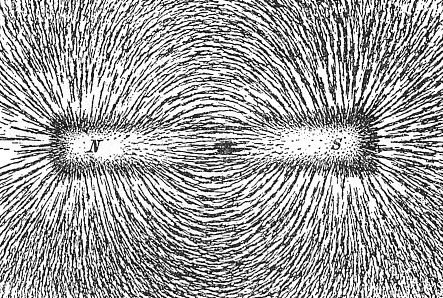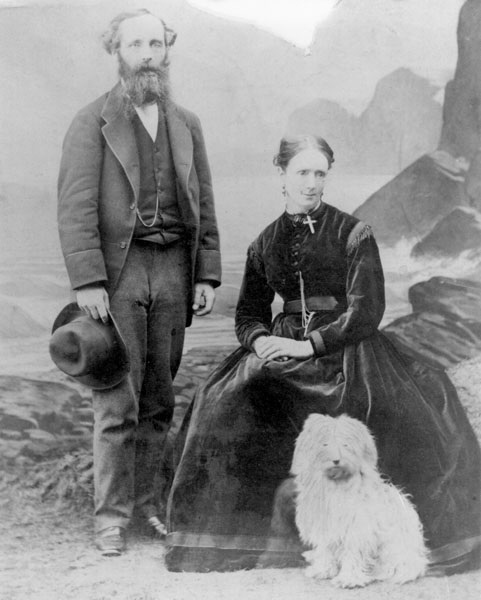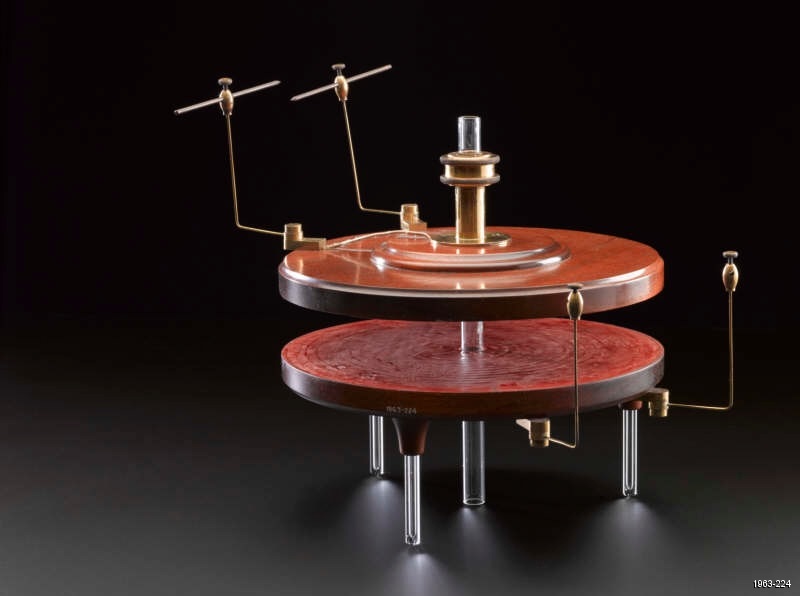150 years ago today (1 January 2015), James Clerk Maxwell published his work on light, electricity and magnetism. Our resident physicist, Dr. Harry Cliff, reflects on how Maxwell helped transform the way we live.
Whether you were up with the lark this morning to greet the dawn of the New Year or crawled bleary-eyed from bed after an over-exuberant farewell to 2014, it’s likely that one of the first things you did was to switch on a light or throw open the curtains.
An appropriate way to start what UNESCO has proclaimed as the International Year of Light, a 365-day celebration of light science and technologies, inspired by a number of major scientific anniversaries that fall this year.
It was 150 years ago today that one of the most important scientific articles of the 19th century was published in the Philosophical Transactions of the Royal Society. Written by the Scottish physicist James Clerk Maxwell, it was titled A Dynamical Theory of the Electromagnetic Field, and its contents were to profoundly alter the way we think about light, electricity and magnetism and transform the way we live.

Maxwell had been grappling with the relationship between electricity and magnetism for a number of years, in particular with a very old and thorny problem: how is it that when I hold a magnet some distance away from a piece of iron, the iron is moved without actually touching the magnet?
This so called ‘action at a distance’ was troubling in a mechanical age when scientists were trying to describe all forces in terms of direct physical contact between physical entities. In Maxwell’s previous work on electromagnetism, he had made an attempt to explain action at a distance using the commonly-accepted existence of an all-pervading invisible fluid, the luminiferous aether, full of spinning vortices that transmitted electrical and magnetic forces.
Maxwell’s great breakthrough in his new paper came from his decision to try to describe electricity and magnetism without worrying very much about the details of what the aether was like. Instead he introduced the concept of the electromagnetic ‘field’, which in his words:
“is that part of space which contains and surrounds bodies in electric or magnetic conditions.”
In other words, the electromagnetic field described the force that would be experienced by an electric charge or magnet when placed close to another charge or magnet. A common experiment at school is to visualise the magnetic field around a bar magnet by sprinkling it with iron filings.

However, whereas today physicists consider the electromagnetic field to have existence in its own right, Maxwell still thought of it as an effect of the arrangement of some underlying physical luminferous aether.
Armed with his electromagnetic field concept, Maxwell derived twenty equations that could be used to describe almost any electromagnetic system, and made plain the deep connections between electricity and magnetism. He then applied his equations to describe undulations or waves travelling through the electromagnetic field. His goal was nothing short of explaining the nature of light itself.

What Maxwell found was to change the course of science and technology forever. He derived an equation that described a wave of oscillating electric and magnetic fields; little ripples in the electromagnetic field that could even travel through empty space. Calculating the speed with which these ripples would travel, Maxwell found that it agreed precisely with the best measurement of the speed of light. Maxwell concluded:
“The agreement of the results seems to show that light and magnetism are affectations of the same substance, and that light is an electromagnetic disturbance propagated through the field according to electromagnetic laws.”
This was a stunning result, but it would take time for Maxwell’s theory to become widely accepted. The mathematics were so unfamiliar that most physicists were unable to understand, let alone appreciate Maxwell’s work. In 1879 a prize was offered by the Prussian Academy of Science for anyone able to provide experimental verification of Maxwell’s theory.
Experimental support for the theory would not arrive until after Maxwell’s death in 1879 at the age of just 48. In a series of experiments conducted between 1886 and 1888, Heinrich Hertz demonstrated the transmission of electromagnetic waves, proving Maxwell right and opening up a new technological age, one in which electromagnetic signals could be beamed across the planet, radically shrinking the size of the world and allowing communication at a distance never before imagined.

Although Maxwell never lived to see the full impact of his work, those who followed in his footsteps transformed the scientific landscape. It was Maxwell’s wave equation that inspired Einstein’s theory of special relativity, which did away with the lumineferous aether and recast the very notions of space and time. Einstein himself kept a framed photograph of Maxwell on the wall of his office, and Maxwell is now widely regarded as one of the greatest physicists to have ever lived, second perhaps only to Isaac Newton and Einstein himself.
I will leave the final word to the 20th century quantum physicist Richard Feynman:
“From a long view of the history of the world—seen from, say, ten thousand years from now—there can be little doubt that the most significant event of the 19th century will be judged as Maxwell’s discovery of the laws of electromagnetism. The American Civil War will pale into provincial insignificance in comparison with this important scientific event of the same decade.”
Find out more about how Maxwell’s work opened up a new age of telecommunication in the Science Museum’s new Information Age Gallery.
3 comments on “Happy New Year (of Light)!”
Comments are closed.
Lest we forget Oliver Heaviside who recompiled Maxwell’s 20 equations into the four famous equations we love so well.
What a superb summary! Congratulations to the author.
I remember a question from my University finals exams “Starting from Maxwell’s equations, prove Green’s Theorem”. Thanks to some last minute revision just prior, I got it!
Since my whole career has been in electromagnetics, solid state physics and microwave engineering, I really appreciate you publishing this article.
Thank you …
This is exactly what I’m studying right now. It’s so hard to understand that I’m constantly amazed at Maxwell’s genius.